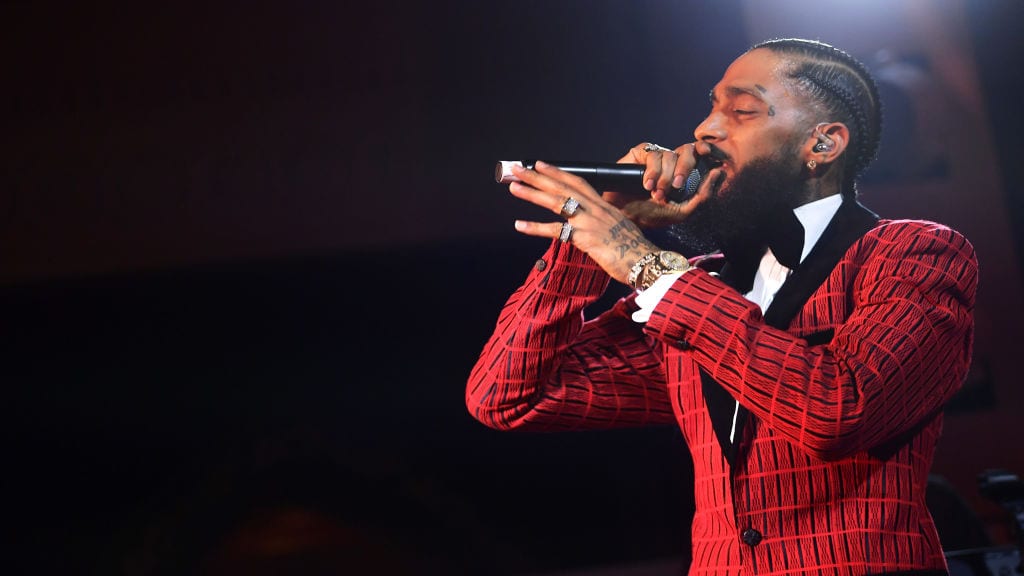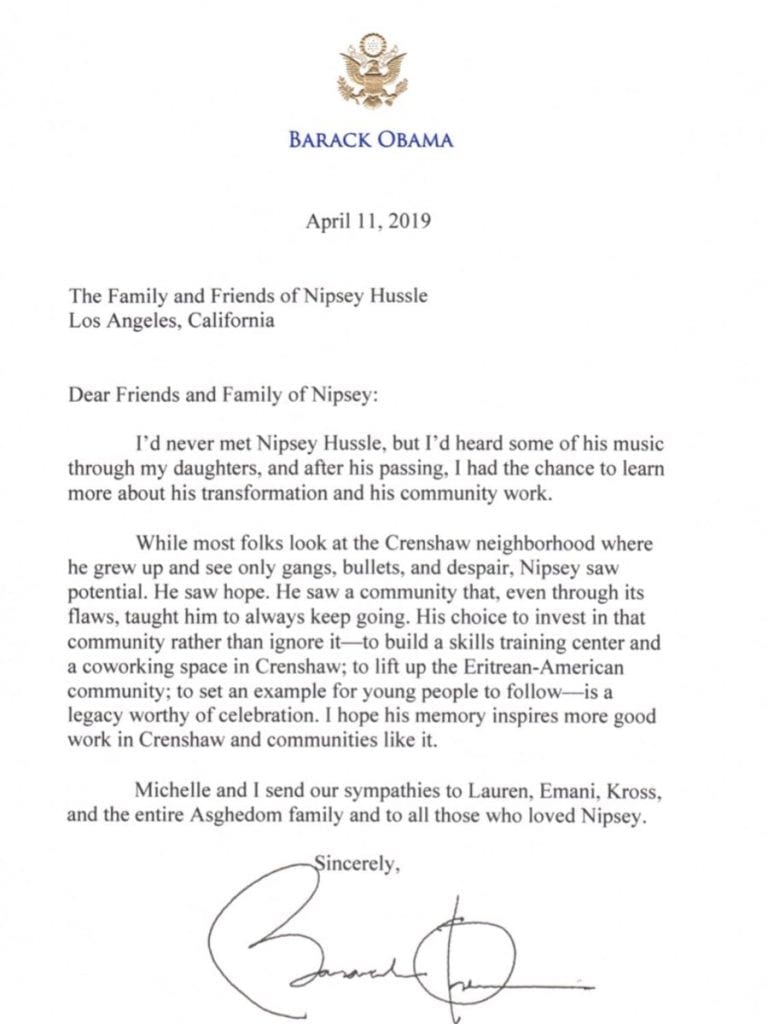Media worldwide has been consistently covering the death of a cultural icon, Nipsey Hussle. Knowing Nipsey’s work and mission very well, I’ve been surprised to learn that many of my colleagues don’t fully grasp his impact, and what it means for all of us who connect people every day. The story of Nipsey Hussle is both inspiring and heartbreaking, and it’s imperative to talk about why his story matters so much to the masses and the media.

“Ask ’em how Hussle got on…”
Last week was a hard one for the culture. I hope that using this venue to celebrate and analyze Nipsey’s life and work can help other communicators, both at Ketchum and across the industry, do the same.
Many of us have followed Nipsey Hussle since his early mixtape days. We loved the motivation music he created, the realness his raps represented, and that the project we declared 2018’s album of the year (not just rap album, best album), was recognized by the GRAMMYs.
For some of us, it was more about his interviews on ownership and being self-made, the STEM programs he was creating, his documentary on Dr. Sebi’s trial, and cryptocurrency, listening to the ideas of a man who was empowering his community.
For most of us, it was a combination – the man, the music, and the mission – The Marathon.
For others, it was hard to understand how this man they had never heard of until March 31st, was dominating their news feeds and news cycles. While many knew the magnitude of Nipsey Hussle’s tragic murder worldwide, some couldn’t grasp why their favorite celebs were tweeting tributes, nor why his memorial would be held at the Staples Center. While top news media reported on the tragedy respectfully, two culturally clueless commentators callously laughed, as they confused Nipsey with YG, since they apparently think all rappers look the same. This is extremely problematic and needs to be called out. The way they communicated his death was not only factually inaccurate, it was malicious, and it was an embarrassment to the communications industry.
But by April 11th, the world knew. Any news outlet you turned to that day was focused on the life celebration of Ermias Joseph Asghedom. Major media not only covered his memorial, they live streamed it. Not only did they live stream it, they aired it unedited, letting the world see, hear, and feel the raw emotion, love, respect and loss that people were experiencing. Blacc Sam, Nipsey’s older brother, delivered possibly the most powerful eulogy ever, which USA TODAY called “pure heartbreak.”
Watching Nipsey’s evolution from a gang member to a community leader, it was evident that his trajectory had no limit. He was a protector of the culture, and in my Black History Month blog post, I linked to a piece Nipsey wrote, to explain what “for the culture” means. Regardless if you found out about him 10 years ago, or 10 days ago, here’s a look at who Nipsey Hussle was, what he did, what he stood for, and what we can all learn from him.
“Cause I took control of things, ballin’ the solo way.”
Still I rise and I took the stairs…
Feel tha Fire it’s a different glare #VictoryLap The… https://t.co/P0VAlQXznd— THA GREAT (@NipseyHussle) March 26, 2018
After garnering a deal with Epic Records, Nipsey opted for the independent route in 2010. By 2013, he released his Crenshaw mixtape, and made waves by announcing that he was selling 1,000 physical copies for $100 each. People thought he was crazy. Until JAY-Z bought 100 copies, and the other 900 sold out within 24 hours. He followed up with Mailbox Money, selling 60 copies for $1,000 each. This bet on yourself mentality propelled Nipsey from the block to the boardroom, and allowed him to navigate seamlessly through both worlds.
“Lead to the lake, if they wanna fish.”
The day before his debut album dropped, Nipsey was cutting the ribbon on his new co-working space and STEM center in Crenshaw. He wanted kids to know that along with athletes and rappers, they could aspire to be the next Elon Musk or Mark Zuckerberg. He was a teacher, showing people that ownership was how to control your destiny.
He opened businesses, including The Marathon Clothing store, in the lot where him and his brother used to hang, and sell his mixtapes. He did it to build up his community, and provide opportunities for those who thought they didn’t exist, or couldn’t get hired elsewhere.
As Blacc Sam shared last Thursday, when pressured to kick them out of the lot, the owner instead offered to sell the lot to them, because he knew the impact of their businesses. Nipsey literally bought back the block, and was building it up. A recent analysis helped to quantify the projected economic impact of Nipsey’s work across entertainment, tech, real estate, philanthropy, food and lifestyle: Over 41K people hired, assisted or impacted, with over $210MM in projected value of his investments made from 2013-2019.
“This for who walked down that road…sold everything, but they soul.”
Nipsey knew the race he was running was a marathon, not a sprint. He named two mixtapes, his clothing line, and store around this mentality. The Marathon was not just about his music, it was his brand, his life’s mission.
Nipsey Hussle released his first mixtape in 2005, and his career started taking flight with his 2008 release. He dropped a series of mixtapes over the next 10 years, leading to his 2018 magnum opus. He titled his debut album Victory Lap, which may have seemed strange to some. But by 2018, Nipsey had been running The Marathon for over 10 years. So, this really was his Victory Lap.
“I just respected the game, now my name all in the news.”
The people called him “Neighborhood Nipsey”, and this personified who he was to his community. Like his brother Blacc Sam said at his memorial, if Nip pulled up, 10 minutes later, the whole hood pulled up.
When news of Nipsey’s murder broke, artists, athletes, celebrities, and activists all took to social media to mourn in disbelief. The LAPD Commissioner shared his sadness.
On April 2nd, Russell Westbrook entered the OKC arena rocking Nipsey’s Crenshaw t-shirt, then became only the second NBA player to ever drop 20 points, 20 rebounds, and 20 assists in a game. Russ declared “That’s for Nipsey!” 20 + 20 + 20 = 60. One of the greatest tributes in sports history, will forever be linked to Nipsey, Crenshaw, and the Rollin 60s.
The last funeral at the Staples Center was 10 years ago for Michael Jackson. LA came out deep for Nipsey, with the free tickets gone in minutes, and fans packing the 21K capacity arena to honor their hometown hero. His parents and Lauren London, shared heartbreaking tributes. Minister Farrakhan spoke. President Obama wrote a letter for Karen Civil to read. Stevie Wonder performed. Snoop gave an emotional tribute. Lil Wayne’s son with Lauren London, who lived with her and Nipsey, shared a moving dream he had.

“I got respect in a hundred sets.”
After Nipsey’s murder, the LAPD held press conferences, and we’re visibly shaken. The commissioner called it an assassination, recalling his sadness and disbelief upon hearing the news about Nipsey. Given the volatile history between the LAPD and Black community, this is unheard of.
But, what Nipsey was doing was unheard of. The commissioner read an email Nipsey sent to arrange a meeting with the LAPD, to talk solutions to stop gang violence. That meeting was scheduled for April 1st. Nipsey was tragically killed on March 31st.
But, even though gone in the physical form, Nipsey lives on. The Crips and Bloods united, and took to the streets of LA to honor Nipsey, who was a Rollin 60s Crip. The last time this happened was the ’92 LA riots. Nipsey was the only person with the power to do this. And, he did that.
“This all I’m trying to do – hustle and motivate.”
In 2006, in possibly his first interview, he was talking about real estate and depreciation. He was talking about investments six years ago. He owned businesses and brands. As he said on Victory Lap “I’m integrated vertically.” He owned his label, rightfully named All Money In (No Money Out). He owned his masters. So, when his album sales spiked 2,776%, that was All Money In.
We always say if 2Pac lived past 25, there’s no telling how far he could’ve taken it. Nipsey was inspired by Pac, and elaborated on calling himself the “2Pac of my generation,” saying “I know what Pac was trying to do…it’s my intention.” So, losing Nipsey at 33 is an American tragedy, because we saw him take the baton in The Marathon, take it beyond, and there’s no telling how far he could’ve taken it.
Nipsey Hussle gave his life to South Los Angeles. He died on the block he bought back, on the streets where he built his rep. For those who didn’t know who Nipsey Hussle was until now, on March 31st, America lost a leader, and on April 11th, we mourned and honored a hero, and laid a king to rest.


